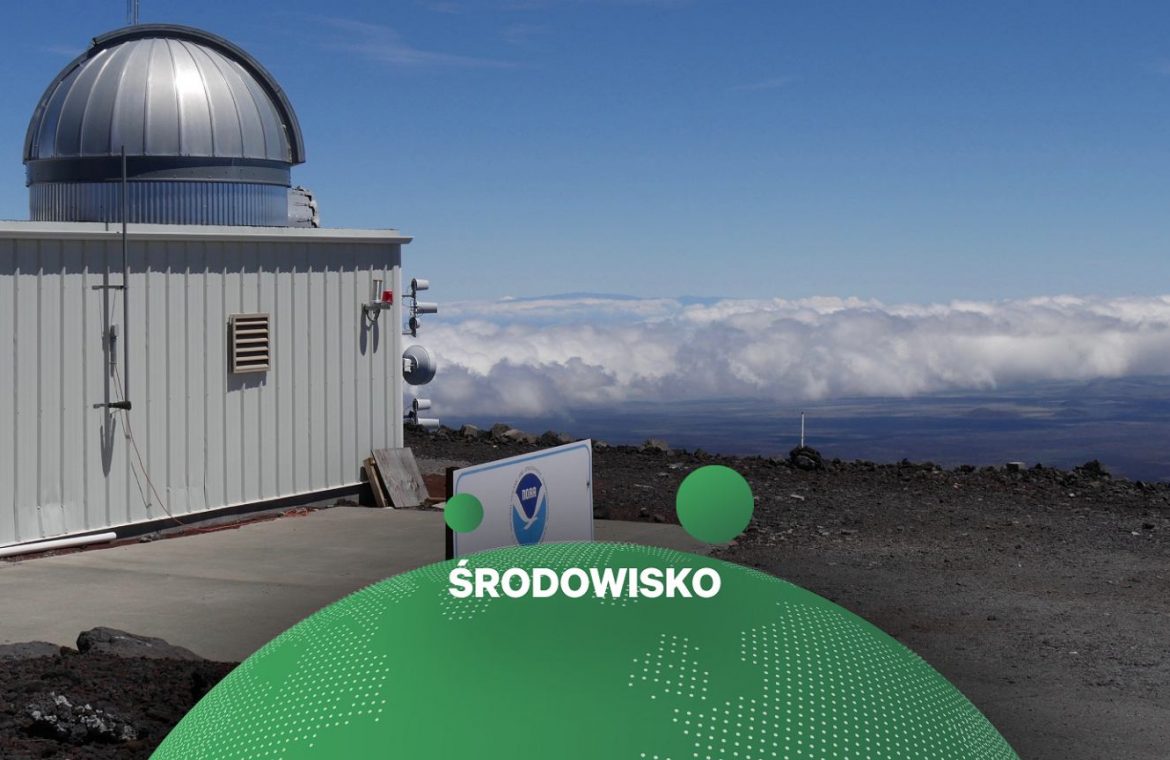dioxide level wegla In the atmosphere, it just exceeded, that is, in May (why May is so important, we will explain a little later), the average value of 419 particles per million (ppm – particles per million). This is the highest reading in research history – accurate measurements have been made for 63 years.
Carbon dioxide in the atmosphere at the highest level in research history
This information was provided by the US National Oceanic and Atmospheric Administration (NOAA) with the Scripps Institution of Oceanography at the University of California, San Diego. Organizations conduct joint research at Mauna Loa Summit Station in Hawaii. It’s the ideal location for such measurements: the volcano is located on the island of Hawaii in the middle of the Pacific Ocean in an area where there is no disturbance from local sources of pollution or emissions from vegetation. According to NOAA experts, the samples collected there reflect the average composition of the atmosphere in the northern hemisphere.
In May this year, the average carbon dioxide content in the air was 419.13 ppm, a year earlier it was 417 ppm. This level continues to rise faster than ever – 2.4 parts per million per year for the past 10 years. This Gas The greenhouse persists in the atmosphere for a thousand years or more after it is emitted, so even a small decrease in emissions, like last year, will do little. In any case, the epidemiological impact of emissions is no longer visible this year.
Scientists have been accurately measuring carbon dioxide levels in real time for several decades, but they are also able to see what it looked like in the past. It turns out we’ve just crossed another alarming threshold: carbon dioxide in the atmosphere is already 50 percent. More than it was before the beginning of the industrial age. not everything. According to NOAA experts, the current amount of carbon dioxide in the air is comparable to that of more than 4 million years ago, when the atmosphere was significantly warmer (About 4°C above pre-industrial temperatures) and sea level was 24 meters above the current level.
“We add approximately 40 billion tons of carbon dioxide pollution to the atmosphere each year,” says Peter Tans, NOAA’s chief expert. “This is a mountain of carbon that we dig out of the ground and burn and release into the atmosphere as carbon dioxide – year after year. If we are to avoid catastrophic climate change, our top priority must be to reduce carbon dioxide emissions to zero as quickly as possible.”
Why in May peak carbon dioxide emissions?
Atmospheric carbon dioxide levels are always highest in May. During fall, winter and early spring in the northern hemisphere, carbon dioxide is released from plants and soil. In early spring and summer, when plants begin to grow rapidly again, produce leaves and grow, absorbing large amounts of this gas. Before that happens, we have a CO2 peak in May. This phenomenon was first observed and described by Charles David Keeling and named after him as the Keeling curve. The Mauna Lea research program at the Scripps Institution of Oceanography is now led by his son, Ralph Keeling.
“We still have a long way to go to contain growth as more and more carbon dioxide accumulates in the atmosphere every year. We need much more emissions reductions than during the COVID-19 lockdowns,” Keeling stresses.
Air pollution with carbon dioxide comes from the combustion of carbon-based fossil fuels – in transportation, electricity generation and cement production, but also from deforestation and agricultural activities. Carbon dioxide is the so-called greenhouse gas – not the only gas, but the most produced by mankind. Its presence in the atmosphere prevents heat from “escaping” from Earth into space. This causes global average temperatures to rise, leading to a series of climate changes: melting glaciers and sea ice in the far north, rising sea levels, the frequency and severity of droughts, and other extreme weather events such as floods, wildfires and hurricanes.
According to Peter Tans, a climate scientist at NOAA, such a rapid rise in carbon dioxide levels in just a few decades is very unusual in the history of our planet. “For example, when the Earth emerged from the last ice age, the carbon dioxide level rose by about 80 parts per million, and the Earth system, of course, took 6000 years” – quotes the expert Associated Press. Meanwhile, between 1979 and 2021, the level of carbon dioxide rose by the same amount – 42 years were enough for what natural processes previously needed several thousand years.


.jpeg)
.jpeg)





